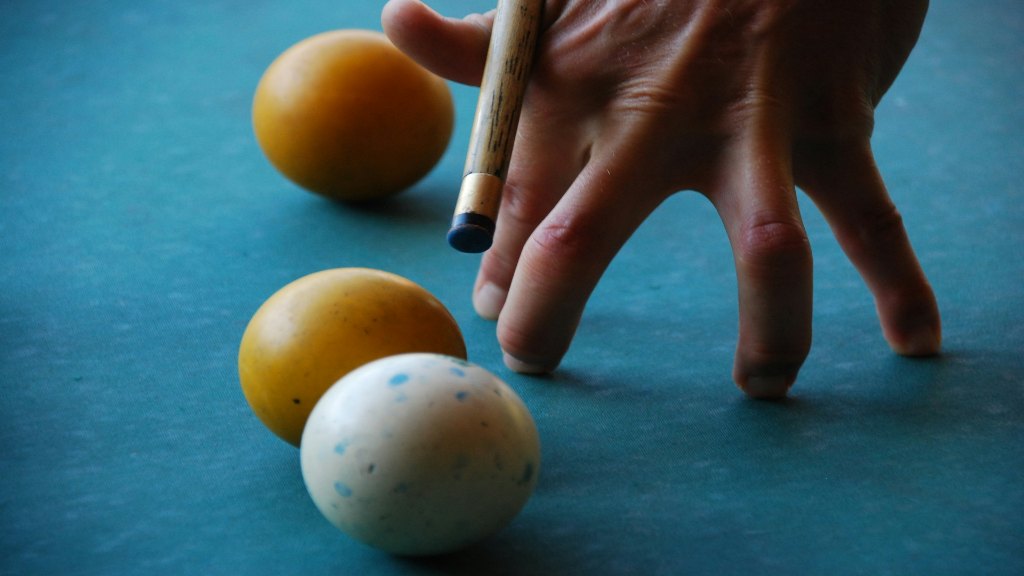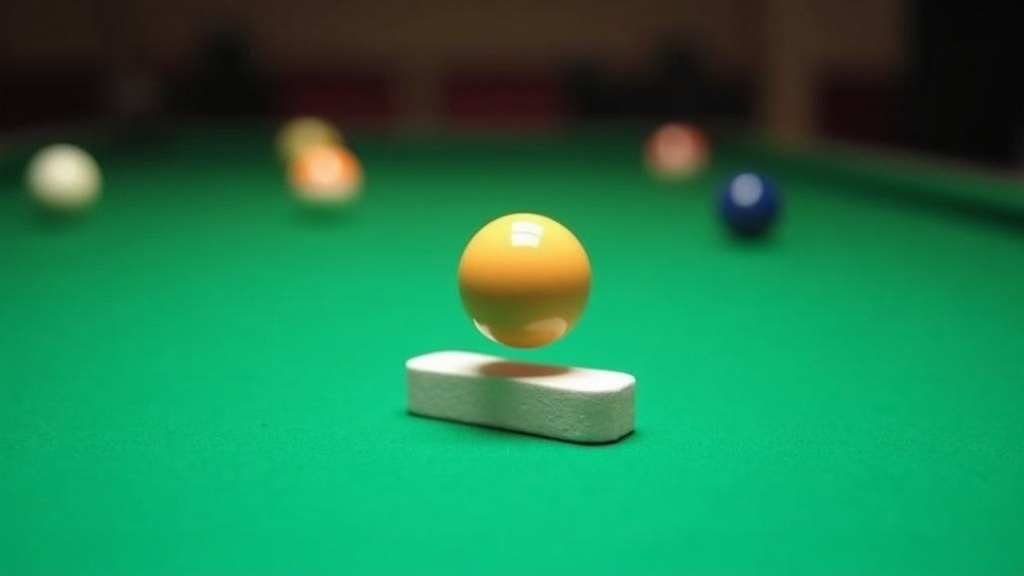Jump shots in pool look tricky and feel even better to pull off, but perfecting them can be tricky when you’re just getting the hang of things. In pool, a jump shot is where the cue ball pops up-off the table’s surface, and helps you escape a snooker or steer through tricky layouts. If you’ve ever seen a pro do it, you know how next-level cool it looks. With a bit of know-how and the right practice, anyone can add this shot to their toolkit.

Jump Shot Equipment: Picking the Right Cue for the Job
Your equipment can seriously affect your jump shot success. While you can technically use your regular cue, jumping is easier and more consistent with a actual jump cue. These cues are shorter, stiffer, and lighter than your regular stick. That design lets you generate the quick, controlled force you need for a clean jump.
If you don’t have a jump cue, you can try using a break cue (if you have one) or your standard playing cue; just make sure it has a firm tip. A soft tip will struggle to deliver enough pop to get the ball airborne. For casual practice, it’s fine to start with what you have, but investing in a jump cue is worth it if you’re planning to get serious about this skill. If you’re really looking to give your game a boost, browse options at a local billiards stores and ask for recommendations based on your play style.
Understanding the Basics: What Makes a Jump Shot Work?
A successful jump shot isn’t about brute force. It’s a mix of technique, finesse, and the right timing. When the cue hits the cue ball at a downward angle with a quick, controlled motion, the ball lifts gently off the table. Getting that right means paying attention to your stance, bridge, cue elevation, and stroke. Practice on a variety of tables with different cloth types to get a sense of how playing conditions can impact your jumps.
- Cue Elevation: Lifting the back of your cue up and hitting above the cue ball’s center is what gets the ball into the air. The higher you elevate, the steeper the jump; however, too much elevation can make controlling the cue ball tricky and can risk damaging the felt.
- Firm, Accelerating Stroke: A quick, snappy drive-through motion is key. You want a fast acceleration through the ball, not a slow push.
- Alignment: Carefully line up the tip with the vertical center line of the cue ball so it jumps straight rather than veering off sideways.
Step-by-Step: How to Execute a Pool Jump Shot
Breaking down the process makes it easier to spot where things can go wrong or right. Here’s how I approach a jump shot:
- Spot the Obstacle: Pick out which ball you have to jump over and be sure the path is clear. Jump shots can only be made when you’re blocked by an object ball or cluster.
- Choose Your Cue: Grab your jump cue, break cue, or a regular cue with a firm tip.
- Get Into Stance: Stand closer to the table than usual, lined up behind the shot line. Mix up your weight slightly forward and flex your knees.
- Bridge Hand Position: Raise your bridge hand so your bridge is elevated. I keep my bridge short, stern and my fingers spread for balance. This helps the cue stay steady at the angle you need. Some players place their fingers wider apart to get even more stability.
- Cue Elevation: Raise the butt of your cue, aiming for a 40-70 degree angle, depending on the shot. The goal is enough lift to clear the obstacle, but every table and ball reacts a bit differently.
- Align with the Cue Ball: Make sure your cue tip aims for just above the cue ball’s center (closer to the top) and that you’re perfectly in line with the shot.
- Stroke: Use a quick, firm, wristy motion. Keep your upper arm and body still; the movement comes from your forearm and wrist, not your shoulder.
- Follow Through: After striking, let the cue tip follow through slightly. Don’t try to scoop or force the ball; the pop should come naturally from the strike and elevation.
Don’t get discouraged if you miss your first dozen tries. Build muscle memory by repeating these steps and making minor tweaks based on where your shots go off-track. Review your stance and hand placement to see if a small change could help you get a cleaner, more controlled jump.
Practice Drills to Build Confidence

Drills make a real difference when learning jump shots. They build both your accuracy and your confidence, little by little. Try these practical drills:
- Chalk-Jump Drill: Set a piece of chalk on the table and try to jump the cue ball over it into a pocket. This helps you learn cue elevation and control without much risk or setup. Once you master the chalk, try higher objects and obstacles.
- Multi-ball Gaps: Place two object balls a few inches apart (as a gap), then try jumping the cue ball over the gap. As you get better, widen the gap or use bigger obstacles. Alternate the gap’s width and placement on the table to boost your shot changeability.
- Distance Control: Mark two points on the table. Start by jumping the cue ball over the obstacle and landing it on a coin or aiming for a specific landing spot. This drill builds accuracy in both direction and distance. Keep tabs of your progress to spot improvements and areas needing more work.
Common Mistakes (And How to Avoid Them)
I see a lot of pool players—including myself when I was learning—make the same slip-ups with jump shots. Knowing what to avoid is just as important as knowing what to do:
- Scooping Under the Ball: Some folks try to get under the cue ball with an upward motion, but that’s actually a scoop shot and it’s illegal in all official pool rules. Always strike above center with a downward motion.
- Muscling the Shot: Using too much brute force just sends the cue ball flying in wild directions or harms your table. Focus on a snappy, controlled motion instead.
- Moving the Body: Stability is everything. If you move your body, hips, or upper arm during the shot, you lose control. Keep everything but your forearm and wrist still.
- Incorrect Cue Alignment: Missing the vertical center line on your cue ball makes the ball spin off at weird angles. Take your time aligning the shot before pulling the trigger.
If you’re struggling, ask a more experienced player to watch your form and point out where you can tighten up your technique. A little outside observation can speed things up and help build better habits.
Advanced Tips to Take Your Jump Shot to the Next Level
Once you’ve got the basics down and can jump over chalk or small gaps with consistency, there are some more advanced ideas that can raise your game:
- Fine-Tune Cue Elevation: Adjust your cue angle based on the size of the obstacle and distance to the object ball. Lower angles require more speed but offer more control, while higher angles make for a steeper, higher jump. Experiment with different angles during practice to see which feels most comfortable and controllable for you.
- Reading Table Conditions: Each table reacts differently to jump shots. Softer cloth, humidity, and worn rails all play a role. The more tables you practice on, the easier it is to adjust on the fly. Try playing at different pool halls to get a sense of how conditions vary.
- Landing Softly: Work on controlling how the cue ball lands so it doesn’t scratch or bounce wildly off the table. Try landing the cue ball so it stops near your target rather than rolling away too far. This can lead to much better position play.
- Avoiding Fouls: Always double-check that your jump isn’t going to fly off the table or hit another ball unintentionally. In tournaments, jumping the ball off the table or scratching counts as a foul and you lose your turn. Practice legal and safe jumps until they feel automatic.
Once jump shots become second nature, begin incorporating them into actual game situations. For instance, use them to navigate tricky safeties or maintain momentum during an eight-ball run. This not only sharpens your skill under pressure but also adds some flair that’s sure to catch attention.
Pool Jump Shot FAQs
I get questions from friends about jump shots, so I’ve gathered a few of the most common ones here:
Q: Can you use any pool cue for jump shots?
A: While you can technically jump with any cue, a special jump cue makes it a lot easier thanks to its lightweight and stiff design. If you don’t have one handy, a break cue with a hard tip is the next best thing.
Q: Is it legal to scoop under the cue ball for a jump shot?
A: No, scooping the ball—where you dig or lift under the ball—is illegal in standard pool rules. The stroke must be downward and strike the ball above center.
Q: Does jumping damage the pool table?
A: If done correctly, jump shots shouldn’t harm your table. Avoid excessive force and wild strokes to reduce wear on the cloth and avoid chipping the slate. Make sure you only attempt jumps on tables where it’s allowed and always respect the venue’s rules.
Q: How do I control where the cue ball lands after the jump?
A: The key is in your cue elevation and follow-through. Practice landing the cue ball on a specific spot; start with short jumps and work your way up. Gradually increase the distance and complexity as your confidence grows.
Building On Your Progress
Mastering the pool jump shot opens up a whole new set of options at the table. It lets you turn difficult defensive positions into game-saving plays and adds an extra layer of creativity to your play. With the right equipment, solid basics, and focused practice, you’ll be jumping balls with way more confidence. Remember to start with simple drills, mind your technique, and don’t rush because consistent practice always pays off.
Getting comfortable with this shot can take a while, but when you finally pull it off in a tight match, it feels absolutely wonderful. Keep practicing and you’ll have another powerful skill to set free anytime you need it.
